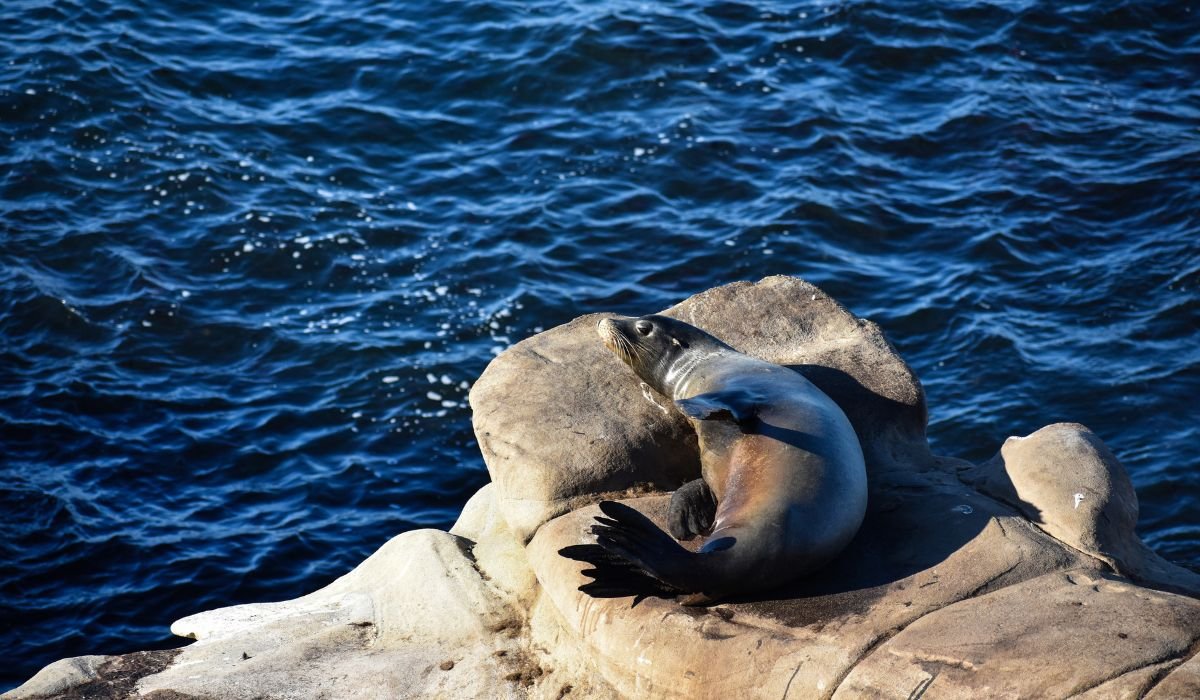Assume casting nets not into the open sea, but into a labyrinth of stones built centuries ago, designed by moonlight and tradition to gently trap squid. While modern fishing relies on tech and trawlers, Sicily guards an astonishing secret: the calamariere. These ingenious, ancient stone structures aren’t relics; they’re a testament to sustainable fishing wisdom that still whispers across the Mediterranean waves. Are we overlooking ancient solutions in our rush for the new?
What Exactly is a Calamariere?
Forget metal traps or industrial nets. A calamariere is a marvel of passive fishing engineering, crafted entirely from local stone. Picture this:
- A Submerged Maze: Built in shallow coastal waters (often 1-5 meters deep), it consists of low stone walls arranged in intricate, often star-like or labyrinthine patterns.
- Designed for Squid: These walls create channels and chambers perfectly suited to the movement patterns of squid, especially during their spawning seasons (spring and autumn).
- Working with the Moon: Operation is intrinsically linked to the lunar cycle. Fishermen traditionally worked the calamariere on moonless or dark nights. Why? Squid are drawn to the shallows to spawn during these periods, guided by instinct and the absence of bright light.
- The Gentle Trap: As squid navigate the channels guided by the stone walls, they are gently funnelled towards central collection points or chambers. Fishermen, often using small nets or simply wading, would then carefully gather them by hand or with small scoop nets.
Think of it like this: It’s less like hunting and more like creating a welcoming neighborhood specifically designed for squid, where the “doors” guide them naturally to a central gathering spot when the conditions are just right. It’s fishing with nature, not against it.
A Journey Through Time: The History of the Calamariere
The calamariere isn’t just a fishing tool; it’s a page from Sicily’s living history book. Their origins are shrouded in time, but evidence points to:
- Ancient Roots: Likely developed by Phoenician, Greek, or early Sicilian cultures, possibly over 2000 years ago. Similar structures exist elsewhere in the Mediterranean, but Sicily’s are particularly iconic.
- Medieval Refinement: Their use and construction techniques were significantly refined during the Arab and Norman periods in Sicily. Knowledge was passed down through generations of fishing families.
- A Community Effort: Building a calamariere was a massive undertaking. It required communal labor – gathering vast amounts of stone, understanding tides and seabed composition, and possessing intricate knowledge of squid behavior. This fostered strong community bonds.
- Enduring Through Centuries: Despite technological advances, many calamariere remained actively used well into the 20th century, especially in smaller, traditional fishing communities like those around Vendicari, Marzamemi, and parts of the Trapani coast.
How Does a Calamariere Actually Work?
It’s a dance between biology, lunar cycles, and stone. Here’s the step-by-step:
- The Trigger: Darkness & Instinct: On dark nights, particularly around the new moon, squid migrate into very shallow coastal waters to spawn. Reduced light makes them feel safer from predators.
- The Guidance System: The low stone walls of the calamariere rise just above the seabed. Squid, moving along the bottom, naturally follow these physical structures as they navigate the shallows.
- The Funneling Effect: The cleverly arranged walls create converging paths. Instead of swimming freely, the squid are subtly directed by the stones.
- The Collection Point: All paths eventually lead to one or more central chambers or pits within the calamariere structure. This is where the squid congregate.
- The Harvest: Fishermen, working quietly from small boats or wading, would enter the calamariere at low tide or during the night. Using lanterns (historically) or headlamps (more recently) to momentarily dazzle the squid, they’d swiftly and selectively gather them with hand nets (lampedare). This allowed for immediate size selection, releasing undersized or non-target species.
Key Feature: The walls are low enough that fish can swim over them, but squid, being benthic (bottom-oriented) creatures during this activity, follow the walls. This inherent selectivity is a core part of its sustainable design.
Calamariere vs. Modern Squid Fishing: A Stark Contrast
Let’s look at how this ancient method stacks up against today’s common practices. The differences are profound:
| Feature | Traditional Calamariere | Modern Industrial Squid Fishing (e.g., Trawling, Jigging) |
| Selectivity | Highly Selective: Primarily targets mature squid during spawning runs. Minimal bycatch. | Low Selectivity: Catches squid of all sizes + significant bycatch (fish, crustaceans, sometimes turtles). |
| Habitat Impact | Minimal/Low Impact: Stone structures integrate with the seabed, creating micro-habitats. | High Impact: Trawls scour the seabed, destroying habitats like seagrass and coral. |
| Energy Use | Zero Fuel: Relies entirely on tides, moon, and human effort. | High Fuel Consumption: Large vessels burn significant diesel. |
| Scale | Small-Scale & Local: Catches are modest, supplying local communities. | Industrial Scale: Catches huge volumes for global markets. |
| Squid Quality | Superior: Gentle capture = minimal stress, perfect condition. | Variable: Can be bruised; longer time on boat affects quality. |
| Sustainability | Inherently Sustainable: Works with natural cycles, minimal ecosystem disruption. | Often Unsustainable: High bycatch, habitat destruction, overfishing risks. |
The Bottom Line: The calamariere is the epitome of low-impact, targeted fishing. Modern methods prioritize volume and efficiency, often at a significant ecological cost the calamariere was designed to avoid.
Why the Calamariere Matters Today: Beyond Nostalgia
In an era of overfishing alarms and ecosystem collapse, the calamariere isn’t just a museum piece; it offers vital lessons:
- Blueprint for Sustainability: It demonstrates that high efficiency doesn’t require high destruction. It’s a model of working within natural limits and cycles.
- Biodiversity Haven: The stone structures themselves become artificial reefs over time. Algae, mollusks, small fish, and crustaceans colonize them, enhancing local biodiversity. It adds to the ecosystem, unlike trawls that subtract.
- Zero Bycatch Champion: This is perhaps its most crucial modern relevance. In a world where discards plague fisheries, the calamariere achieves near-perfect selectivity, protecting other marine life.
- Carbon Neutral Fishing: No engines, no fuel, no emissions. It’s fishing with the lightest possible carbon footprint.
- Cultural Heritage & Identity: Preserving and understanding calamariere is vital for Sicilian cultural heritage. It connects communities to their maritime past and traditional ecological knowledge. Initiatives like those at the Tonnara di Scopello or the Vendicari Nature Reserve highlight this.
- Premium Quality & Traceability: Squid caught this way is exceptionally fresh and handled minimally, commanding premium prices for discerning chefs and markets seeking authentic, sustainable seafood. Think top restaurants in Modica or Syracuse sourcing directly.
Can You Still See a Calamariere? Where Tradition Meets Tourism
Yes! While actively fished less frequently now, many calamariere structures are still visible, especially in protected marine areas or where conservation efforts are active. They’ve become fascinating points of interest:
- Vendicari Nature Reserve (Siracusa): This stunning coastal wetland reserve protects several well-preserved calamariere. Look for them near the famous Swabian Tower. Walking paths offer viewing opportunities (best at low tide!).
- Marzamemi (Siracusa): This picturesque fishing village has calamariere structures nearby. Their presence underscores the town’s deep fishing roots.
- Trapani Coast: Areas around Mozia and the Stagnone Lagoon have historical calamariere sites.
- Guided Tours & Eco-Tourism: Local operators, particularly in areas like Vendicari, are increasingly offering guided walks or boat tours explaining the history and function of the calamariere, combining nature watching with cultural heritage. Cooperativa Silene often runs excellent educational tours.
- Museums & Cultural Centers: Places like the Museo del Mare in Marzamemi or exhibits at the Tonnara di Scopello often feature models, photographs, and explanations of the calamariere.
Pro Tip: Visit during the spring or autumn (squid spawning seasons) and check moon phases (aim for new moon periods) for the best chance to understand their operational context, even if not actively fished. Seeing them at low tide is crucial!
Preserving the Stone Sentinel: Challenges and Efforts
Keeping this ancient knowledge alive faces hurdles:
- Labor Intensity: Building and maintaining stone structures is incredibly hard work compared to deploying modern nets.
- Declining Traditional Knowledge: The intricate understanding of lunar cycles, squid behavior, and construction techniques is held by fewer and fewer elder fishermen.
- Economic Pressure: Small, sustainable catches struggle to compete economically with large-scale industrial fishing in a globalized market.
- Environmental Shifts: Coastal development, pollution, and climate change impacts on squid populations and coastal ecosystems also threaten the viability of traditional sites.
However, hope persists through dedicated efforts:
- Cultural Heritage Recognition: Pushing for UNESCO or national heritage status raises awareness and protection.
- Sustainable Tourism Integration: As mentioned, eco-tourism provides economic value and educates the public.
- Community Revival Projects: Some fishing cooperatives are exploring reviving calamariere use for niche, high-quality markets, combining tradition with modern marketing (e.g., direct sales to high-end restaurants, eco-labels).
- Academic Research: Universities like Catania or Palermo study the ecological role and historical significance, providing data for conservation arguments.
- NGO Action: Organizations like Marevivo advocate for marine protection areas that often encompass these historical structures.
5 Ways to Connect with the World of the Calamariere
You don’t have to be a Sicilian fisherman to appreciate and support this legacy:
- Visit & Learn: Plan a trip to Vendicari, Marzamemi, or Trapani’s coast. Seek out the calamariere at low tide. Join a guided eco-tour focused on marine heritage.
- Choose Sustainable Seafood: Support restaurants and fishmongers (like Pescheria Andrea in Ortigia) that prioritize locally caught, sustainable seafood, including squid caught using low-impact methods. Ask how your squid was caught!
- Spread the Word: Share the story of the calamariere! Talk about it, post photos (respectfully), highlight its unique sustainability angle. Awareness is key to preservation.
- Support Preservation Efforts: Donate to or follow organizations (like Marevivo Italia or local Sicilian heritage groups) working to protect marine cultural heritage and coastal ecosystems.
- Respect the Sites: If you visit a calamariere, never walk on the stone walls (they are fragile ecosystems). Observe from a distance, take only photos, leave no trace.
The calamariere stands as a silent, stony guardian of a different relationship with the sea. It’s not about domination, but coexistence; not about maximum extraction, but respectful harvest. In its ancient channels, we find profound lessons for a more sustainable future – lessons written in stone and moonlight, waiting for us to rediscover their wisdom. What ancient practices in your own region might hold forgotten solutions?
FAQs
- Is “calamariere” only used in Sicily?
While the term is Sicilian, and Sicily has the most famous examples, similar traditional stone fish traps for various species exist throughout the Mediterranean (e.g., madrague in France, almadraba in Spain for tuna). The specific design for squid is particularly characteristic of Sicily. - Are calamariere still used to catch squid commercially?
Active commercial use is now rare but not extinct. A few small-scale, traditional fishermen, often supplying local niche markets or restaurants, may still occasionally use maintained calamariere, particularly in protected areas like Vendicari. It’s more about cultural preservation and premium product than mass production. - Can tourists fish in a calamariere?
Generally, no. Most visible calamariere are within protected marine areas or are historical sites. Fishing in them is typically restricted to preserve the structures and the ecosystem. The focus for tourists is on observation and learning. - What’s the difference between a Calamariere and a Tonnara?
Both are traditional passive fishing structures. A Tonnara is a much larger, complex system of nets (historically also anchored with stones) specifically designed to trap large migratory tuna. A Calamariere is smaller, built entirely of stone walls, and specifically targets squid in shallow coastal waters. - Why are the stone walls so low?
The low height is crucial! It allows fish (which swim higher in the water column) to pass freely over the walls, minimizing bycatch. Squid, however, tend to move along the seabed during their spawning migration and are guided by the walls, demonstrating the method’s inherent selectivity. - How long does it take to build a calamariere?
Building a traditional calamariere was a massive communal effort, often taking months or even years. It involved quarrying or gathering large quantities of suitable stone, transporting it by boat, and carefully placing it according to the specific design on the seabed – all without modern machinery. - Does the calamariere harm the squid?
Quite the opposite. The capture method is incredibly gentle. Squid are guided, not netted aggressively. They are typically gathered by hand or small scoop nets from the calm water of the collection chamber, resulting in minimal stress and damage, leading to superior quality.
You may also like: Everything You Should Know Before Buying CZ Jewellery Online











